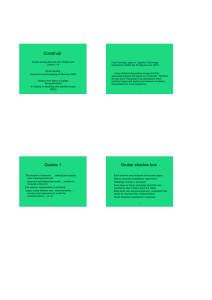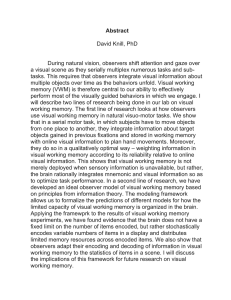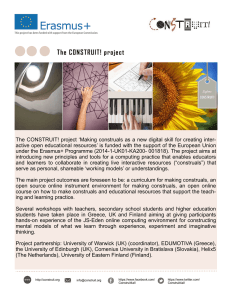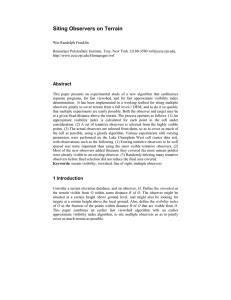A definition Construal 11/10/2012
advertisement
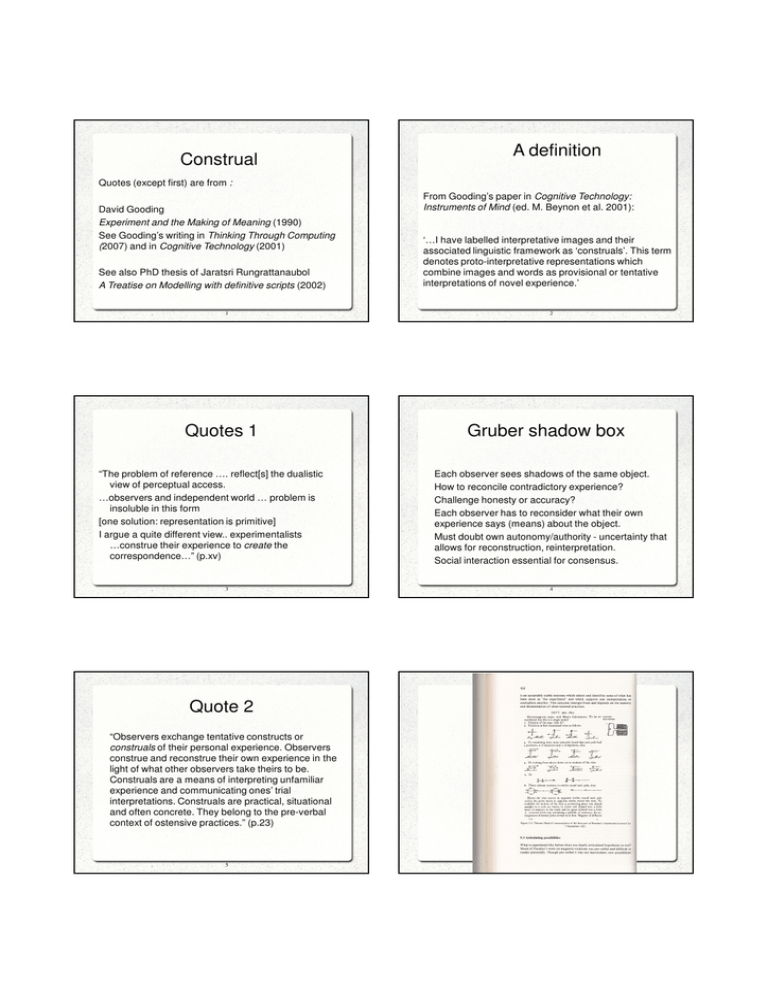
11/10/2012 Construal A definition Quotes (except first) are from : David Gooding Experiment and the Making of Meaning (1990) See Gooding’s writing in Thinking Through Computing (2007) and in Cognitive Technology (2001) See also PhD thesis of Jaratsri Rungrattanaubol A Treatise on Modelling with definitive scripts (2002) 1 Quotes 1 “The problem of reference …. reflect[s] the dualistic view of perceptual access. …observers and independent world … problem is insoluble in this form [one solution: representation is primitive] I argue a quite different view.. experimentalists …construe their experience to create the correspondence…” (p.xv) 3 From Gooding’s paper in Cognitive Technology: Instruments of Mind (ed. M. Beynon et al. 2001): ‘…I have labelled interpretative images and their associated linguistic framework as ‘construals’. This term denotes proto-interpretative representations which combine images and words as provisional or tentative interpretations of novel experience.’ 2 Gruber shadow box Each observer sees shadows of the same object. How to reconcile contradictory experience? Challenge honesty or accuracy? Each observer has to reconsider what their own experience says (means) about the object. Must doubt own autonomy/authority - uncertainty that allows for reconstruction, reinterpretation. Social interaction essential for consensus. 4 Quote 2 “Observers exchange tentative constructs or construals of their personal experience. Observers construe and reconstrue their own experience in the light of what other observers take theirs to be. Construals are a means of interpreting unfamiliar experience and communicating ones’ trial interpretations. Construals are practical, situational and often concrete. They belong to the pre-verbal context of ostensive practices.” (p.23) 5 1 11/10/2012 “Faraday’s work ... ... on magnetic rotations was pre-verbal and difficult to render pictorially. Though preverbal it was not inarticulate: new possibilities were articulated behaviourally and concretely by manipulations (of wires, magnets, and pencil and paper) and then, increasingly, by words and pictures.” (p.123/4) 7 Quotes 3 “…how observers bring unruly experience into the domain of public discourse.” (p.23) “…..the historical dimension - the need to invent concepts that can communicate new information gained through experiment” (p.24) “observers construe experience … the supposedly mysterious correspondence of representations to entities … is a made relationship” (p.26) 8 2
